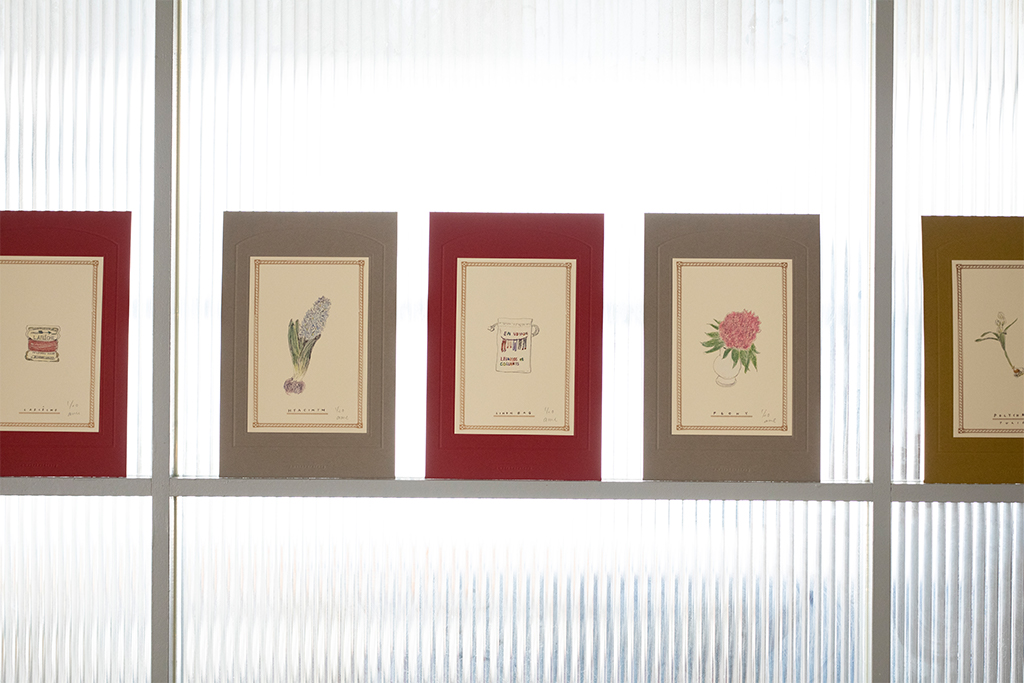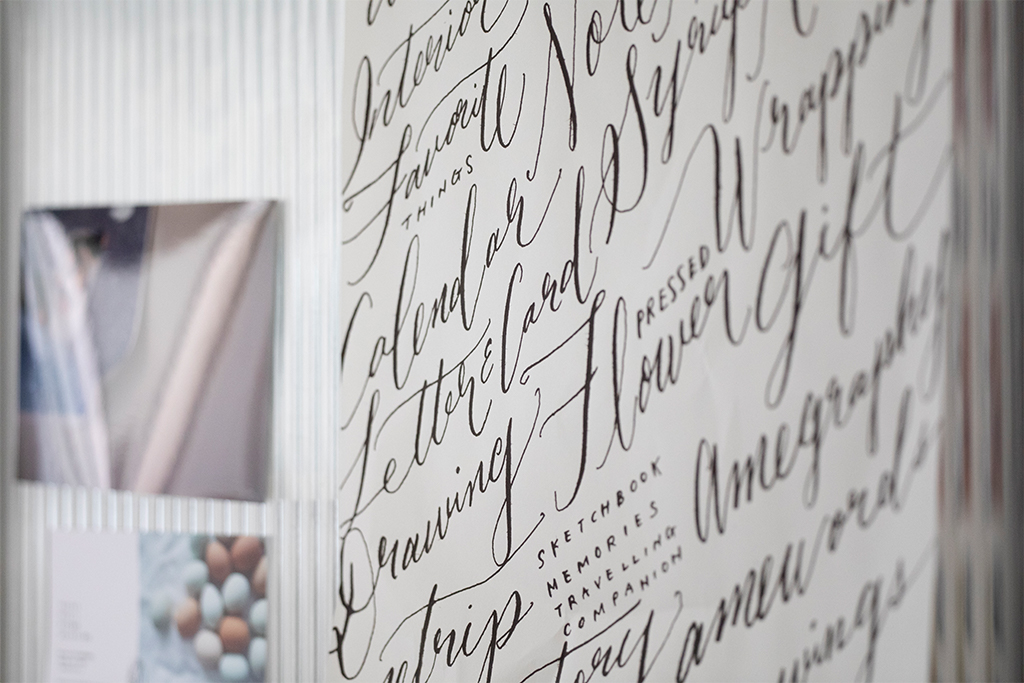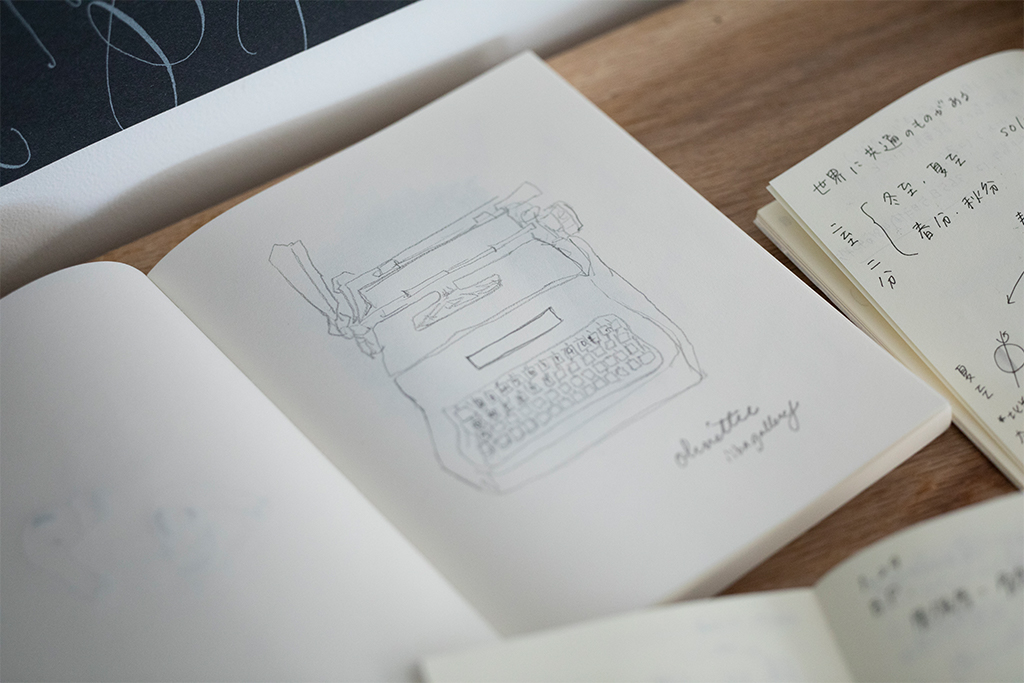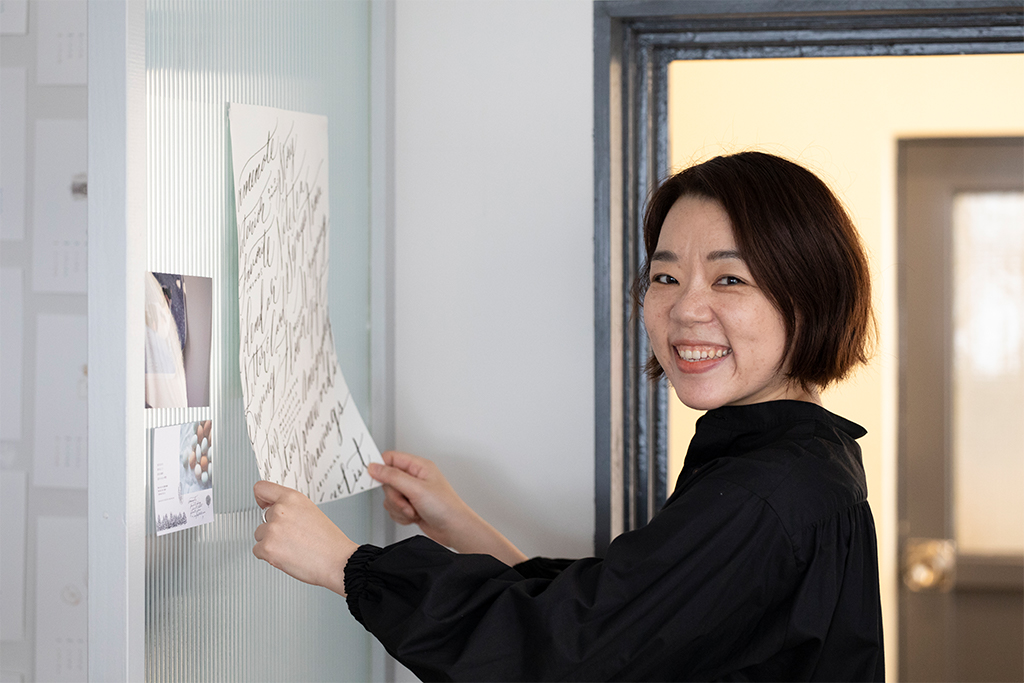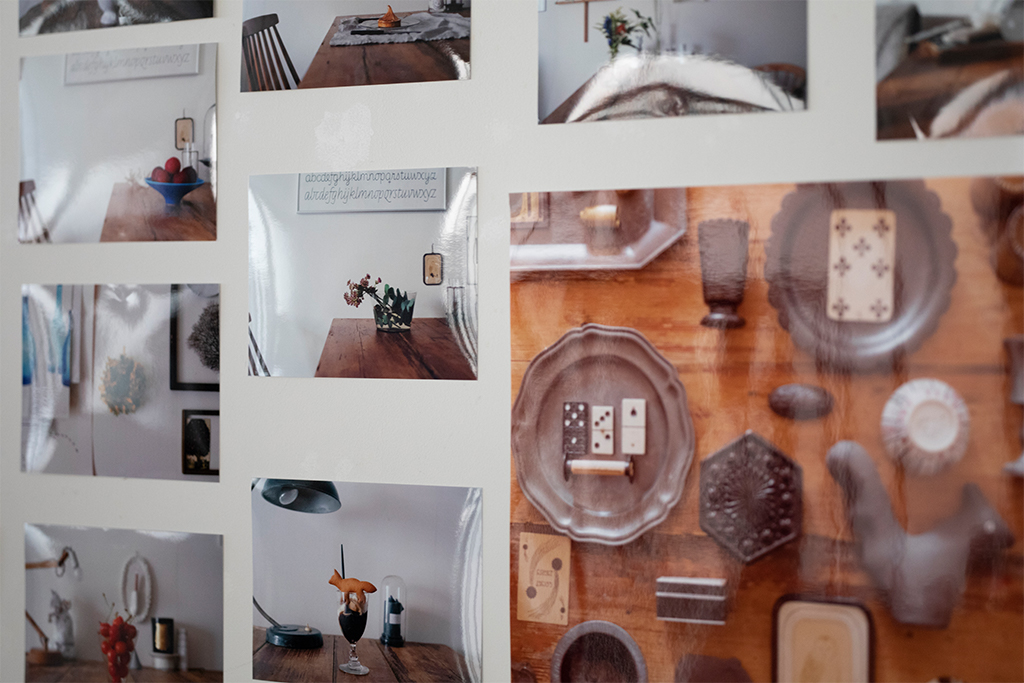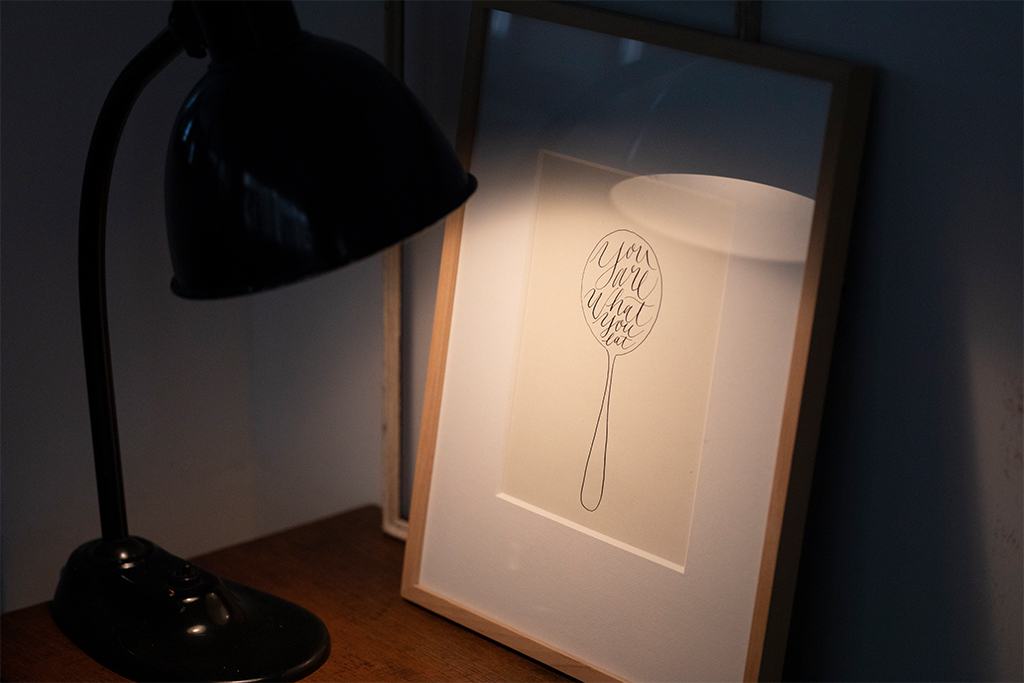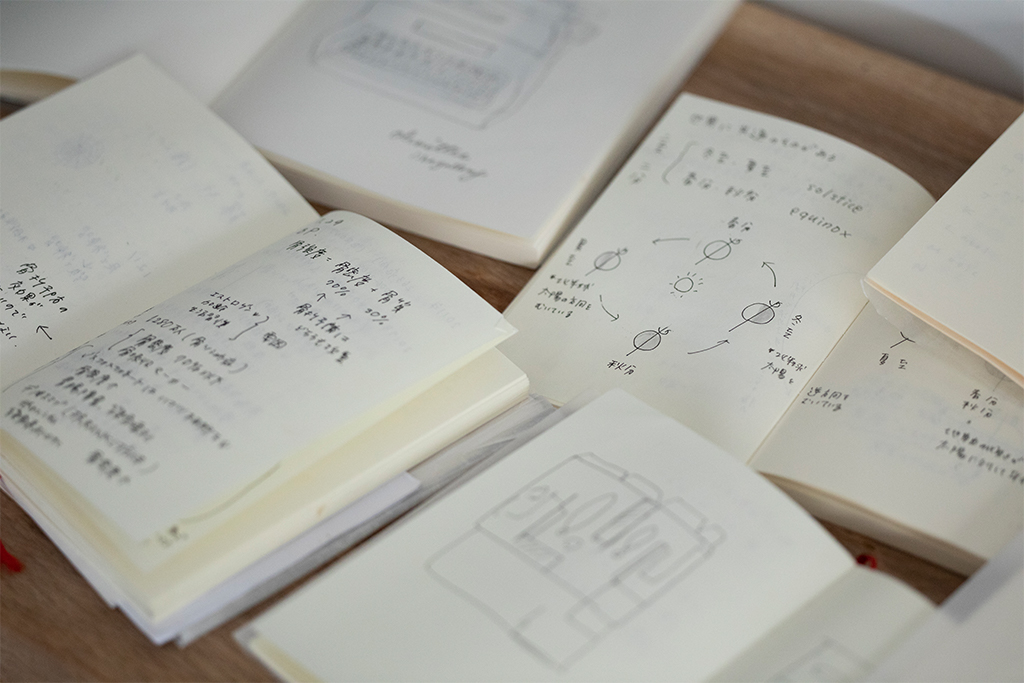ame (Mikiko Amemiya)
Dentist / Artist
ame (real name Mikiko Amemiya) attracts one new fan after another with her Instagram account, @amelabo, where she posts captivating photos, illustrations and calligraphy. She has also published a book featuring her best slice-of-life art in the 10 years she has been on Instagram. We asked her about how she got into creative work and why those forms of art appeal to her.
――Your photos and hand-drawn illustrations are really striking in how they capture seasonal sights or the corner of a room. How did you get into photography and illustration?
I got into photography during college, when my father gave me a compact camera. I would just walk around snapping anything that caught my eye, whether it was scenery or something in a room. I had liked physical items ever since I was a child, but I didn’t just arrange the things I bought like you see in a shop display. I thought a lot about what kind of arrangement would express my personality, and I think I took photos to see whether each arrangement was right for me.
I’ve enjoyed illustrating since I was a child—I was always drawing things that caught my interest, just like with my photography. That may have been influenced by my grandparents, who collected a lot of ceramics and antiques. When I studied dentistry at university, one of the things we had to do was sketch teeth, so that might have influenced my illustrations too.
――Is there any particular secret to how you create those beautiful illustrations?
I don’t make drafts when I draw, and I don’t plan my drawings out. I just get it all on paper and see where my inspiration takes me. Each illustration takes me five to ten minutes, 30 minutes tops. I’m always in a hurry with my drawing—you could even say I’m impatient. (laughs).
In terms of any kind of secret…I guess it’s that I don’t try to get things perfect and I don’t give up on a drawing before it’s finished. The most important thing to me is not drawing from imagination. I keep my eyes on what I’m drawing the whole time, even if that causes the lines to turn out wrong. As long as I like what’s on the paper when I’m done, I’ve done it right. If other people like it too, that’s a bonus.
With that said, I do get anxious about whether a drawing will turn out right. But nothing beats the thrill of it all and the satisfaction when I’ve finished.
――Another impressive style of art that you do is your calligraphy. When did you start doing that?
I like drawing letters. I started off doing lettering with felt-tip pens. I once printed out some letters I had drawn on a thin piece of paper, used it to wrap some soap I had made and posted a photo on Instagram. A lot of people liked that. Just when I was thinking about how I wanted to do more serious calligraphy, I noticed that Veronica Halim, a calligraphy artist I admired, was a mutual follower of mine on Instagram. I met her when she came to Japan for an event and we hit it off immediately. She invited me to do a workshop together and I was her interpreter. I had to learn more English and I struggled with speaking it, but it was a great day.
Connecting with people on Instagram has taken me in a lot of new directions. My art career itself wouldn’t have happened without Instagram, and the editor who reached out to me and asked to make a book by ame fans for ame fans was someone who had worked on Veronica’s book. And the designer who did the wonderful designs for my book was someone else I met on Instagram. It was all Instagram. In Japan, we have a story called The Straw Millionaire, where a poor man starts with a single piece of straw, trades it for some oranges and then keeps trading what he has until he becomes rich. My friends call me the Straw Millionaire of Instagram. (laughs)
――I hear that you’re a big fan of MD Notebook. What do you like about it?
The first thing I like about MD Notebook is that it’s unruled. The paper is easy to draw on—the pen doesn’t catch, and the ink doesn’t smudge or bleed through to the other side. I also like that it’s covered in wax paper, which I love, and there’s one in A6 size, which I also love.
I think every artist’s personality shows through in their handwriting and drawing, and MD Notebook draws that out even more. I’ll look back through past pages and think “I was having a hard time then”—that’s something you can only see in handwriting. And you remember the sensations you felt and even the smells. You don’t get those memories from something typed or from data on a smartphone.
The other thing that appeals to me is the tidy codex binding of the MD Notebook Codex 1 Day 1 Page. About 10 years ago, I thought about doing my own bookbinding and bought a book about it, and I decided that if I ever made my own book, it would have codex binding. My book has almost the same style of binding as the MD Notebook Journal, so it was like fate to me.
――When I look at your beautiful photos and illustrations, I see a wonderful approach to life. Is that something you’re conscious of when you choose the things you keep around you?
Basically, I see something beautiful, fall in love with it and take it home with me. That’s my general rule, but lately space has become an issue that I’ve needed to take into account, so I only buy things I can imagine actually using or that I can picture in my place.
――Finally, what do you want to try next?
I want to keep drawing as a career. Specifically, I want to draw things for people—sometimes it might be a motif, other times it might be a monogram—that will draw out what people really like or really want to do.
ame (Mikiko Amemiya)
ame is a dentist in Kobe who works as an artist on the side. Her artistic work—photography, calligraphy and illustrating—began as a hobby when ame was a student. She now publishes her works in calendars and other products, teaches workshops on photography and calligraphy, holds individual exhibitions of her art and works on department store catalogs and event planning. She is also popular on Instagram, where she posts slices of life with her own unique style.

